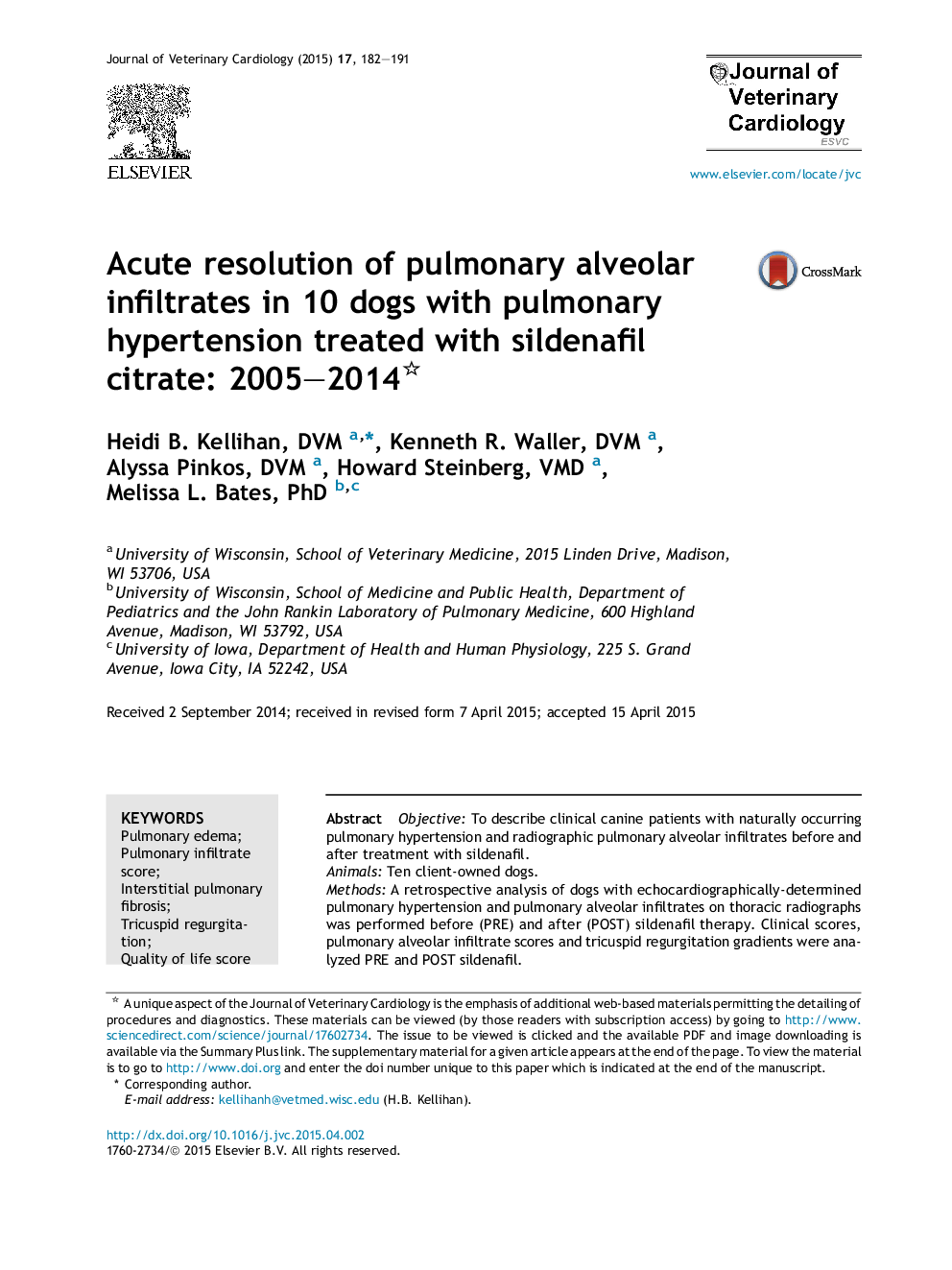| Article ID | Journal | Published Year | Pages | File Type |
|---|---|---|---|---|
| 2400044 | Journal of Veterinary Cardiology | 2015 | 10 Pages |
ObjectiveTo describe clinical canine patients with naturally occurring pulmonary hypertension and radiographic pulmonary alveolar infiltrates before and after treatment with sildenafil.AnimalsTen client-owned dogs.MethodsA retrospective analysis of dogs with echocardiographically-determined pulmonary hypertension and pulmonary alveolar infiltrates on thoracic radiographs was performed before (PRE) and after (POST) sildenafil therapy. Clinical scores, pulmonary alveolar infiltrate scores and tricuspid regurgitation gradients were analyzed PRE and POST sildenafil.ResultsPulmonary alveolar infiltrates associated with pulmonary hypertension developed in a diffusely patchy distribution (10/10). Sixty percent of dogs had a suspected diagnosis of interstitial pulmonary fibrosis as the etiology of pulmonary hypertension. Median PRE clinical score was 4 (range: 3–4) compared to POST score of 0 (0–2) (p = 0.005). Median alveolar infiltrate score PRE was 10 (5–12) compared to POST score of 4 (0–6) (p = 0.006). Median tricuspid regurgitation gradient PRE was 83 mmHg (57–196) compared to 55 mmHg POST (33–151) (p = 0.002).ConclusionsA subset of dogs with moderate to severe pulmonary hypertension present with diffuse, patchy alveolar infiltrates consistent with non-cardiogenic pulmonary edema. The typical clinical presentation is acute dyspnea and syncope, often in conjunction with heart murmurs suggestive of valvular insufficiency. This constellation of signs may lead to an initial misdiagnosis of congestive heart failure or pneumonia; however, these dogs clinically and radiographically improve with the initiation of sildenafil.
